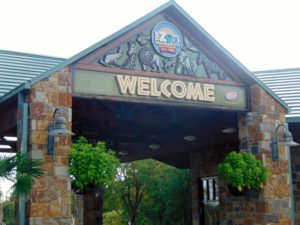
Overall Rating![]()
The Oklahoma City Zoo is located in Oklahoma City, OK. The zoo opened back in 1905, and the zoo currently houses approx. 1,400 species, on approx. 119 acres. The zoo also has a “Zoozeum”, a museum about the history of the zoo. There is also a state of the art Veterinary hospital where patrons can watch different procedures.
The OKC Zoo is a member of the American Alliance of Museums (as both a Living Museum and a Botanical Museum). The Zoo is also an accredited member of the Association of Zoos and Aquariums and participates in the AZA program called the Species Survival Plan.
Oklahoma City Zoo Website: www.okczoo.org
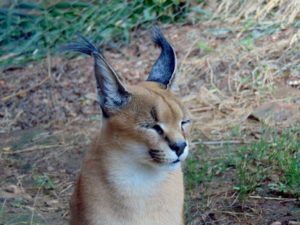
Hours:
9am-5pm Daily (Buildings close at 4:45pm)
Closed Thanksgiving Day, Christmas Day, and New Year’s Day
Ticket Pricing: (approx.)
Adults (12-64)-$11.00
Seniors (65+)-$8.00
Kids (3-11)-$8.00
Kids 2 & under-Free
Parking: Free
Pet Daycare:
The OKC Zoo does have a Pet Daycare (Free) for families traveling with their pets.
Service Animals are Welcome
With any extra service provided I would always call ahead for any information.
Restaurants:
3 Restaurants/concessions (seasonally) are available inside the zoo.
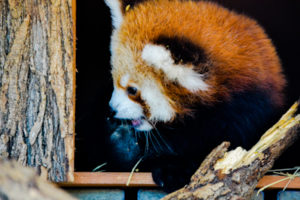
Animal Habitats![]()
Education![]()
Cultural Immersion![]()
Navigation![]()
Food Variety![]()
For more information on our category rating click here.
Our Zoo Experience
Oklahoma City Zoo is 119 acres and took us an entire day to visit. The zoo is laid out in a series of looped paths. I would advise using the map as not to miss anything.
We arrived at the zoo as it opened at 9am. Something I noticed as we pulled into the parking lot, is the large number of handicap spaces available.
When entering the zoo after purchasing your admission you can find everything you need at the front of the zoo. Guest Relation, Safari Gifts, Safari Café (coffee & treats), Strollers, Bathrooms, and Zoo Friends (memberships) in one convenient area.

As you walk in through the turnstiles there are several paths to choose from. We chose to turn left then right. This path led us into the Children’s Zoo.

In here you will find the Affection Section. You can brush and pet the goats. There are also a couple Donkeys, a Pot-bellied Pig, and a few Sheep.
You will also find Wallabies in the very center of the Children’s Zoo. You may enter the Wallaby exhibit to get an up close look at these cuties.
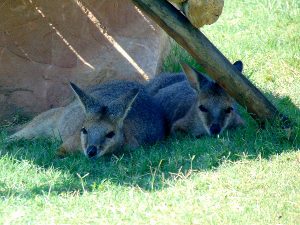
There is a designated area within the exhibit you have to stay. Also you aren’t allowed to touch the Wallabies. If they touch you though it’s ok.
There is a covered patio with rocking chairs to relax in Grandma’s Garden. You can purchase a ticket and feed the Lorikeets.
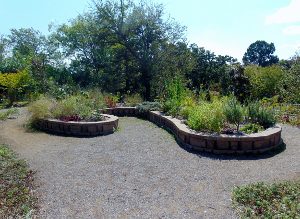
Chilean Flamingos, Agouti, Squirrel Monkeys, and Spider Monkeys can be found in the Children’s Zoo.
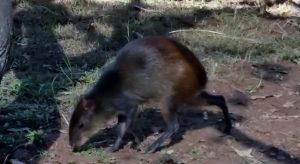
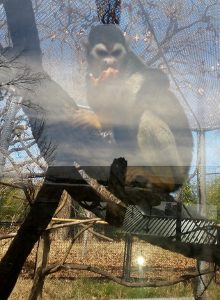
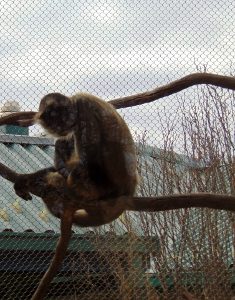
There is a waterfall and a small river running through the Children’s Zoo kids can play in, in the hot summer months. The small river leads into the Koi and Turtle Pond next to the Affection Section.
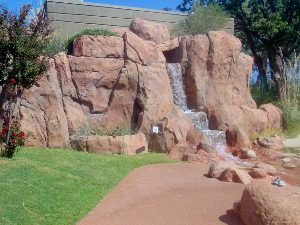
The zoo also made a slide and a sort of tree house for kids (and adults) to play on. After we slid down the slide (Yes, we did!) there are caves with animal exhibits to see and hollow tress to play in.
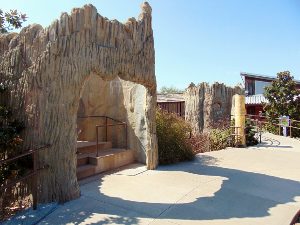

As you circle back around and back up top in the Children’s Zoo you can see a few exhibits of Bugs, Spiders, and Frogs. There are also a couple exhibits of exotic birds like Scarlet Macaws.
Find your way to the Canopy Grill by taking the stairs between the Lorikeet Feeding and Grandma’s Garden.
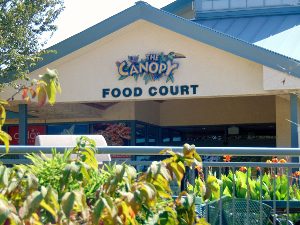
The Canopy Grill offers great food selections. You can pick from offerings like Hamburgers (gourmet), Mexican, or Fried Chicken.

If you aren’t ready for lunch yet, no worries, there are more great offerings around the zoo. Outside of the Canopy Grill is the zoo’s Stingray Bay.
Stingray Bay is a touch pool where you can feed and pet Stingrays! They aren’t as soft or slimy as one might think. You will need to purchase a ticket and follow the very important hand washing and petting/feeding instructions. Also, I would watch out for the ornery stingrays that like to splash visitors.
The next encounter on down the path is the Noble Aquatic Center. This is where the Sea Lion shows also take place.
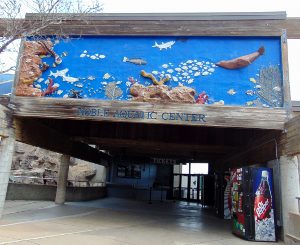
As you walk up to the Aquatic Center, to your left before you enter the building, is where you can view the Sea Lions between shows. Sometimes you can catch them sun bathing on the rocks, but most of the time they are swimming around showing off for their fans.
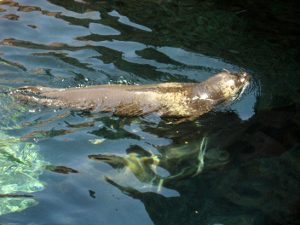
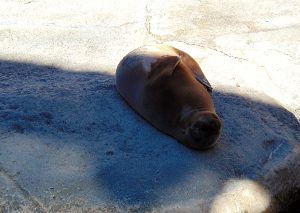
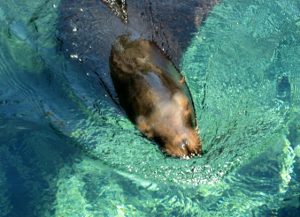
The Noble Aquatics Center Aquariums are no longer on exhibit. All of the animals have been moved to new forever homes at other AZA zoos. You are still able to walk down the ramps to get the lower Lake Front Trail.

Once you exit on the third (lowest) level you can walk along the zoos lake front. Here you can find the Lakeside Café.

After the café are some small exhibits. First you will encounter a Ploughshare Tortoise. Next is the African Crested Porcupine.
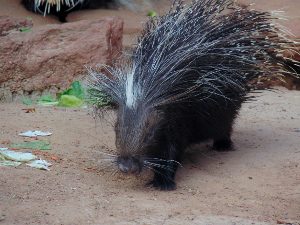
Then, Steve’s favorite, Meerkats. Meerkats are from Africa and related to the Mongoose.
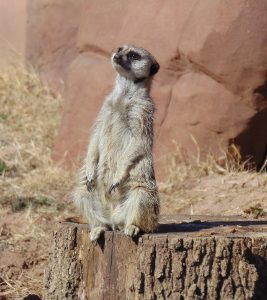
After spending some time with the Meerkats, up next is a Carousel and across from that is a small playground, and a little further on is a large picnic area.
If you go to the right past the playground, you can check out the zoo’s Herpetarium.

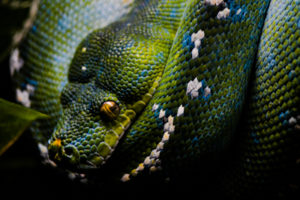
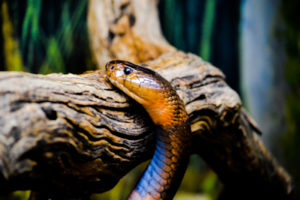
They have a large collection of venomous snakes and more.


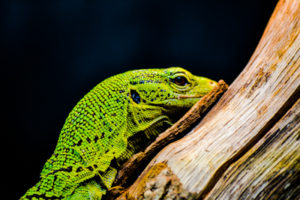

Snakes not really your thing? They aren’t Steve’s favorite either, but he humors me. They do have one of my favorite snakes called the West African Green Mamba.
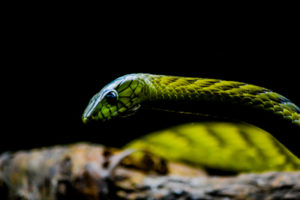
There is also a lizard that I think is too cute called a Shield-tailed Agama.
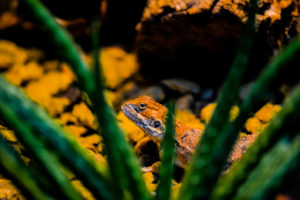
You can walk up the boardwalk to the Island Life building.

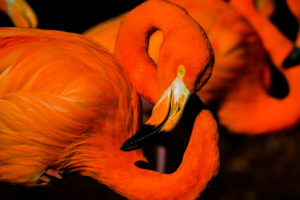
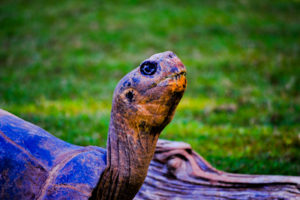
In this building you will encounter Galapagos Tortoise, Beaded Lizards , and a few other really neat creatures (Snakes, Frogs, Turtles, and a few Insects).
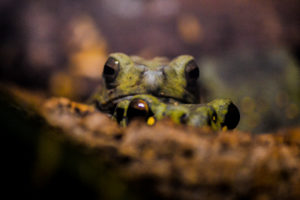
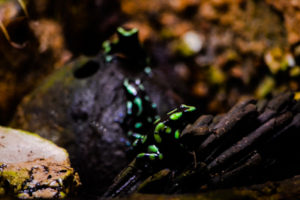
After the Island Life you can take a stroll through the Pachyderm building. Do you know what the word Pachyderm means? It means thick skin.
Do you know what species were originally classified as Pachyderms? Elephants, Hippos, Rhinos, Pigs, and Tapirs were all originally classified together as Pachyderms.
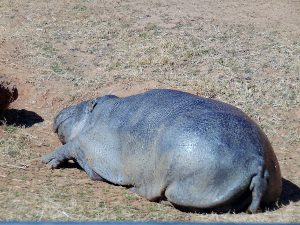
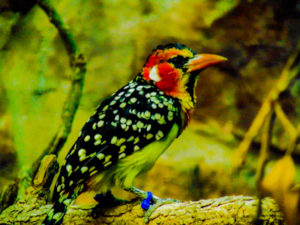
In the Pachyderm building you can encounter a Pygmy Hippo named Woolee. Also housed in this building are various bird species, Tortoise species, and Tamarins.
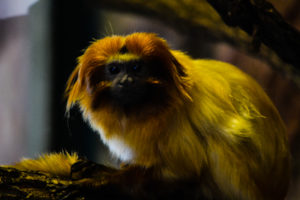
When we exited the Pachyderm building we walked up a hill (there are a few steep inclines at this zoo) and turned left.
We encountered the Ostrich in their outside exhibits. You will walk along the Ostrich habitats and turn left again. Here you will have Ostrich on your left and a few different deer species on your right. The deer exhibit on your right is a large habitat with species such as Eland, Pere David’s Deer, and the Tufted Deer.
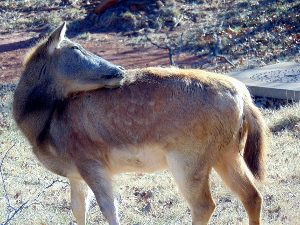
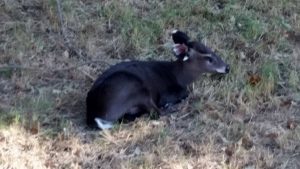
Soon you will arrive at the Lion Overlook. Here you will see Hubert the male lion along with his Lionesses.
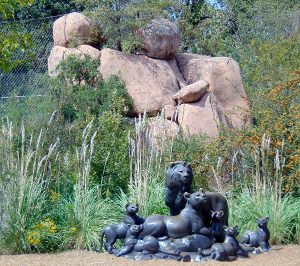
There is a boardwalk parallel with most of the habitat where you can sometimes see them laying up on the hill in their enclosure.
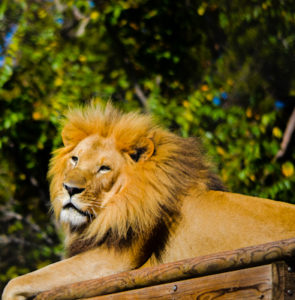
For an up close look, you can view them from under a covered viewing area. Here they have shade and a watering hole.
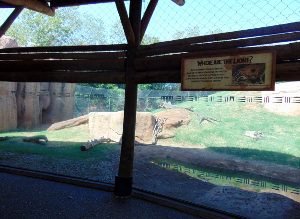
Are you hungry yet? Good we were too. We chose to eat lunch at the Big Rivers Café where they serve chicken and waffles.
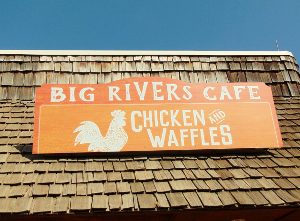
I had a Buttermilk Fried Chicken Sandwich on a Brioche Bun with Asiago Cheese, Lettuce, Tomato, and a Sriracha mayo.
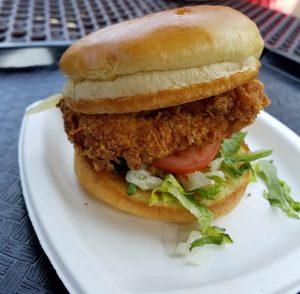
Steve ate and really enjoyed a Buttermilk Fried Chicken and Waffle Sandwich with Asiago Cheese and Sausage Gravy. We both really loved our lunch.
After lunch we decided to walk the trails of the Oklahoma Trails Exhibit. Did you know Oklahoma has eleven different eco-habitats?
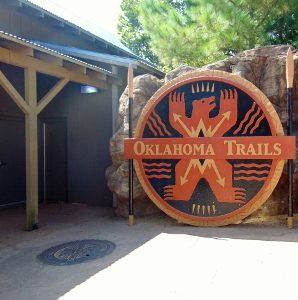
Black Mesa-Rocky Mountain foothills, Short-grass Prairie-Western high plains, Shinnery Oak Savanna-Southwestern table lands, Mixed Grass Prairie-Central great plains, Tall Grass Prairie-Flint hills, Cross Timbers-Central OK/TX plains, Big Rivers-Large, wide sandy rivers, Arkansas Valley-Prairie bottomland hardwood forest, Ozark Highlands-Oak-hickory forest, Ouachita Mountains-Pine savanna moist hardwood forest, Cypress Swamps-South central plains. It is important to know this so you know what species are found where.
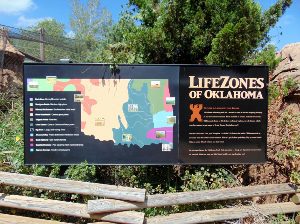
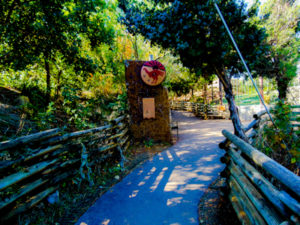
To start off the OK trails we started in the Black Mesa. Here you can encounter Swift Fox, Bobcat, Mountain Lions, White-tail Deer, Sandhill Crane, and Wild Turkey.
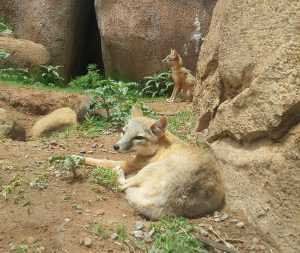
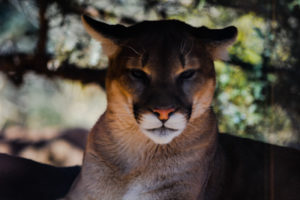
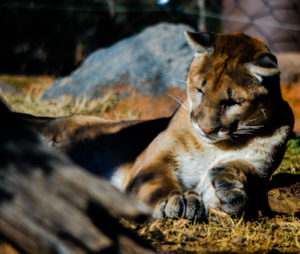
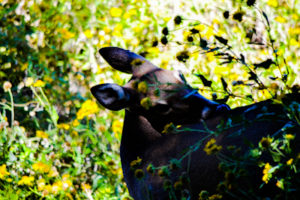
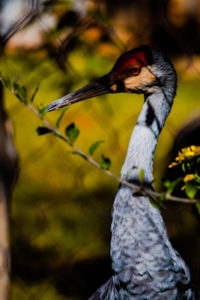
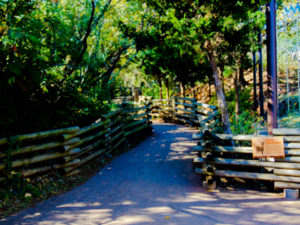
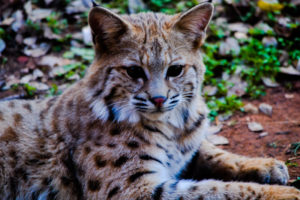
Next we walked through the Mixed Grass Prairie. You can encounter multiple bird species including the Roadrunner (Beep Beep).
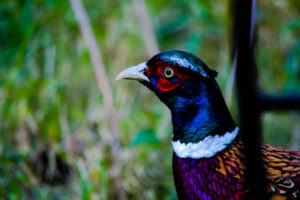
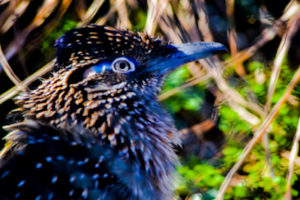
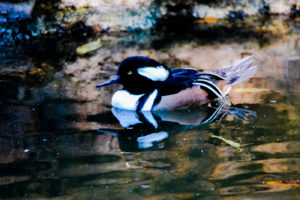
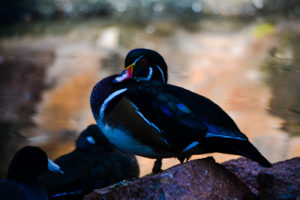
In the Mixed Grass Prairie we found the Nocturnal Building. In this building you can see animals who are active at night.
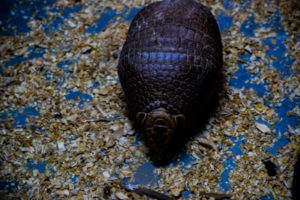
The zoo switches the day/night schedule so the animals think it is their nighttime (active hours) during our daytime and their daytime (sleeping hours) during our nighttime. This allows the animals to stay on a schedule for visitors to be able to see them up and active.
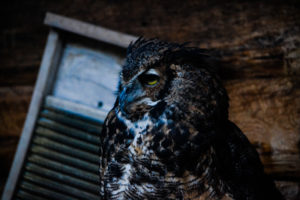
You can find Barn Owl, Opossum, Skunks, Eastern Screech Owl, Southern Flying Squirrel, Insectivorous Bats, Great Horned Owl, and Ringtail Cats on the mammal list.
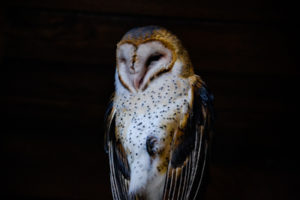
On the creepy crawly list are Scorpions, Desert Tarantula, Black Widow Spider, Woodhouse’s Toad, Norway Rat, Ord’s Kangaroo Rat, Deer Mouse, and Black Rat Snake.
I for one don’t mind any of those species. Did you know Opossums can eat 5,000 Ticks in a season? Those guys are definitely good to have around.
After you make it through the Nocturnal building stop inside the Made in Oklahoma building. Here you can get a cold beverage and find all sorts of products made in Oklahoma.
Back on the trails you will encounter North American Bison (Bison bison) and Prairie Dogs, or P. Dogs as I like to call them.
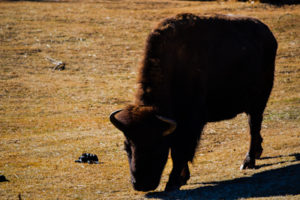
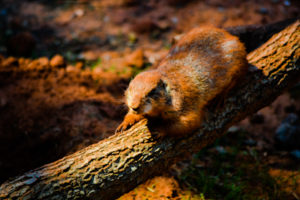
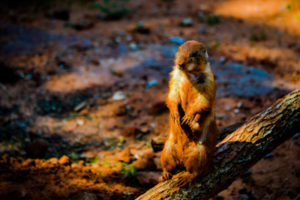
In the Cross Timbers you will come across several species I never knew Oklahoma had, starting with the all-powerful, Grizzly Bear.
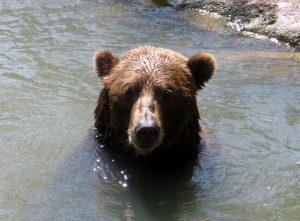
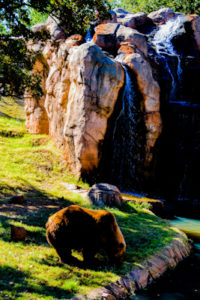
The zoo has two Grizzly brothers. They have a huge waterfall that dumps into a little river the boys can swim and play in. They also have plenty of trees to scratch their backs on.
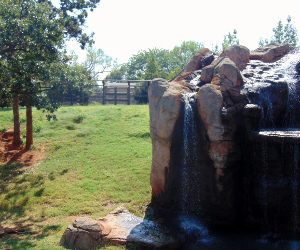
Next to the Grizzly habitat is the Big Rivers building. Inside there is a floor to ceiling viewing window into the Grizzly habitat.

Also in this building are exhibits of species that can be found in Oklahoma Big Rivers.
Along the left side of the building is a gigantic freshwater floor to ceiling aquarium. The huge tank houses species of fish (some huge) that call Oklahoma rivers home.
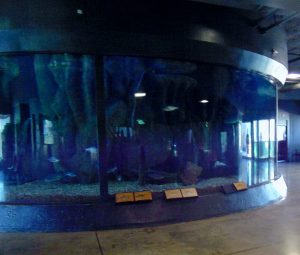
Across from the aquarium along the right wall is a collection of reptiles and amphibians native to Oklahoma.
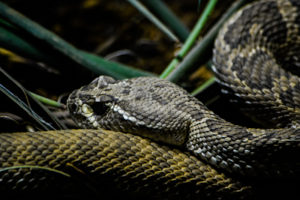
Some of these species are Bullsnake, Copperhead, Prairie Rattlesnake, Timber Rattlesnake, and a turtle called a Stinkpot (ha-ha).
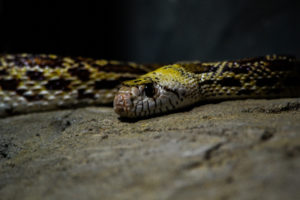
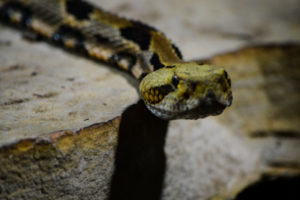
Across from the Grizzly Bear habitat is the North American River Otters.
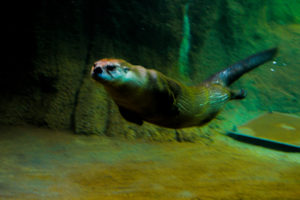
They also have a floor to ceiling viewing window. The difference is half way up their window is water. This allows for visitors to see the River Otter swim.
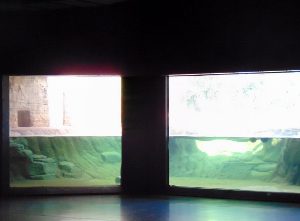
The River Otter has special oil glands that secrete oil to cover their fur to help it be waterproof (more water resistant) and to help them swim better.
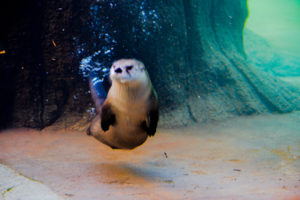
It also helps with temperature control. Their tiny hands are just adorable when they use them to push off the window and summersault in the water.
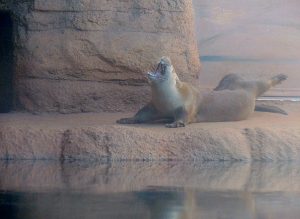
As you exit the Big Rivers building you enter the Arkansas Valley, this is represented by a big waterfall that flows into a river.
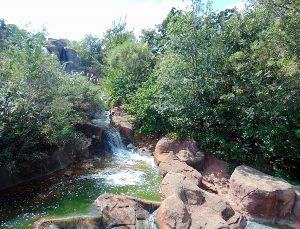
You walk down the boardwalk and suddenly you are in the Ozark Mountains.
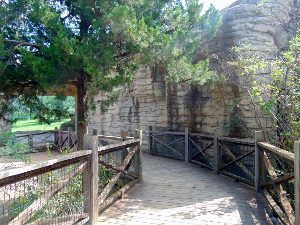
Here you will encounter American Black Bears and Burrowing Owls.
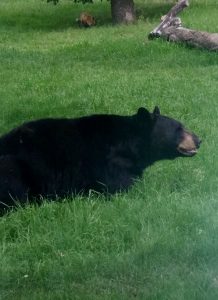
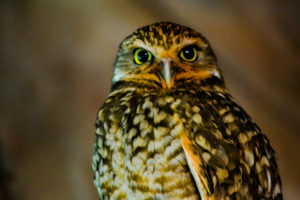
These Black Bears have a small roommate. A Red Fox shares the Black Bear habitat with three big Black Bears.
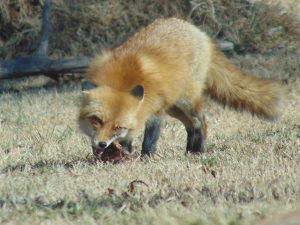
Keep walking and a little way down the boardwalk you will come across America’s National Bird, the American Bald Eagle.
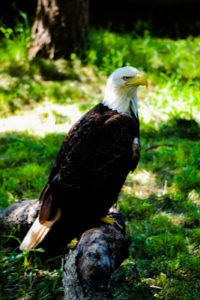
The Bald Eagle has over a six foot wingspan. The Oklahoma City Zoo has a pair of Bald Eagles.
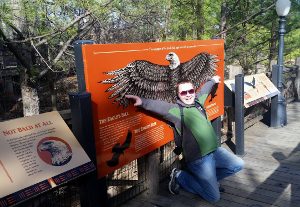
Further down you will see some Wild Turkeys and Whooping Crane sharing a habitat.
Across the boardwalk from the Turkeys is an American Elk. Elk have an unusual call, it’s called a bugle.
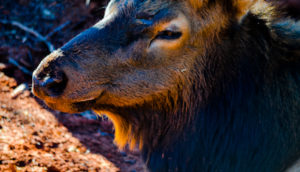
To round out the Ok Trails you will walk through the Cypress Swamps. Here you can look down off the boardwalk and find three to five American Alligators.
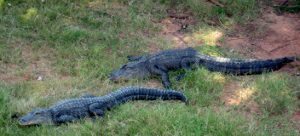
We walked down the stairs and across the Big Rivers Café seating to the Cat Forest. This exhibit takes you around the world and showcases the different cat species (with a few exceptions).
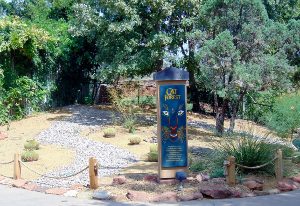
We first started in South America with the Jaguar. Did you know pound for pound the Jaguar has the strongest bite force of all the big cats?
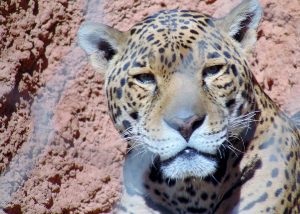
Then we hopped to Asia and saw the Fishing Cat.
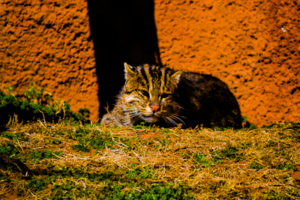
You would assume big cats, like all cats don’t like water, right? Well the Fishing Cat is one example of a cat species that actually loves the water and depends on water to survive.
The Fishing Cat actually fishes for fish in rivers and streams and can keep their eyes open under water.
Next we skip back to South America and look at the beautiful Ocelot. They are a very pretty and a small sized cat.
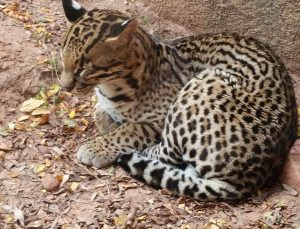
You can walk inside the first of two buildings in the cat forest. Inside the buildings is education on the different species found in the Cat Forest.
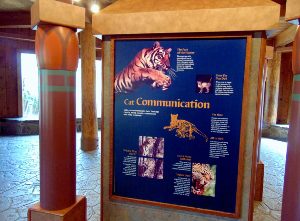
The next species of cat next to the Coati is the gorgeous African Caracal. These cats can jump straight up twice their height and catch bird’s right out of the air. They are very successful hunters.
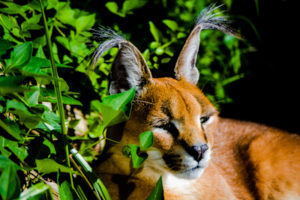
Across form the Caracal is the stunning and shy Clouded Leopard. Clouded Leopards are from Asia. They are also the most arboreal cat species. They will spend about 90% of their lives in the trees.
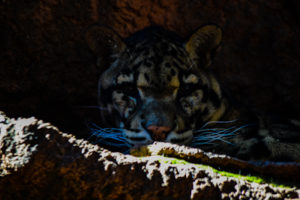
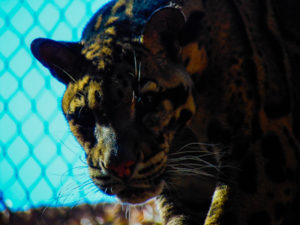
When you walk out of this first building you will continue along the boardwalk path. The lake will be to your right and on the left is another outdoor enclosure for the Clouded Leopards.
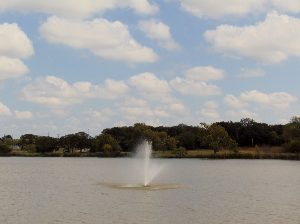
As you walk around the habitat, be sure to look up as Clouded Leopards are climbers and like to sleep in the trees and structures within their habitat.
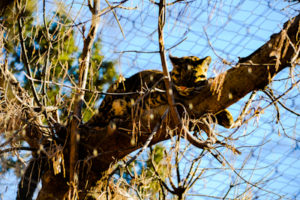
Up next is the the second building in the Cat Forrest. In this building you will see a South American Tyra. The Tyra is a member of the Weasel family.
I was perplexed once again why a weasel was in the Cat Forest. Fortunately we ran into one of the Cat Forest Keepers and I curiously asked “Why do you have a Tyra in the Cat Forest”? She said that at the time they didn’t have another habitat sufficient enough to house the South American species. Ok, fair enough, sounds good to me.
Anyway, the viewing window next to the Tyra is my absolute favorite species ever, the Tiger. The species Oklahoma City Zoo keeps is the Sumatran Tiger.
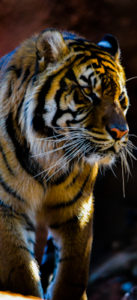
An awesome story we learned during our visit is that their female tiger recently gave birth to three cubs. Well a zoo up north (Philadelphia Zoo, I think), their female tiger had just had five cubs at the same time Oklahoma City Zoo was having her three cubs.
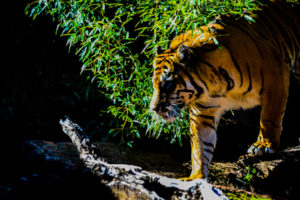
Unfortunately their mama tiger didn’t want her babies (it happens sometimes) and of the five, only one cub had survived.
Her name is Zoya. Anyway, the zoo up north sent Zoya to Oklahoma City Zoo and their female adopted Zoya as her own (that happens sometimes too).
Zoya is a different sub-species than her adopted mama and three brothers, she is an Amur (Siberian) Tiger. Zoya has now moved on to another zoo in North Dakota as a recommendation of the Species Survival Plan, but her story is a testament to how modern zoos work together to preserve and conserve endangered species.
The tiger habitat marks the end of the Cat Forest. When exiting the Cat Forest take a left to head toward the Great Escape and Asian Elephant exhibits.
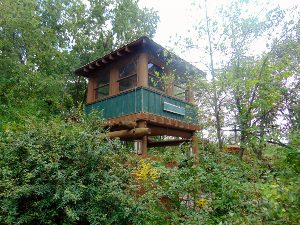
The first of the Great Escape habitats you will come upon is the Western Lowland Gorillas. The zoo has a family group and a bachelor group.
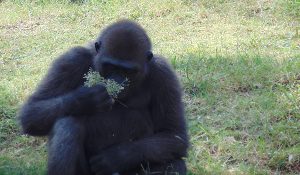
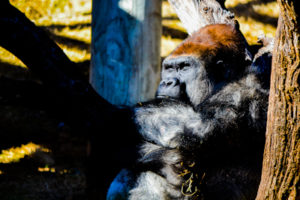
There are a couple of Orangutan habitats between the Gorilla family group and the bachelor group.
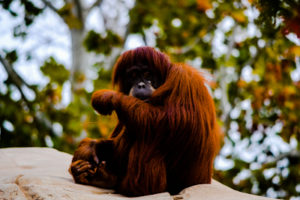
The last Primate habitat in the Great Escape exhibit is the Chimpanzee troop.
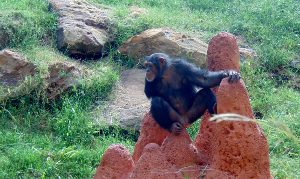
Something we always practice when visiting Gorillas (or any primate really) in any zoo is Gorilla Respect.
- Avoid staring directly at an individual, glance sideways at them.
- Lower you head slightly
- Angle your body slightly away from the Gorilla
- Relax your shoulder & upper body
- Keep your voice low
- And always no matter the animal or exhibit, don’t bang on the glass. The animals know you are there.
The reason for these suggestions is because Gorilla Society is based on respect. These gestures will help the Gorillas to relax and if they are relaxed and comfortable with you, they and you will have a better experience.
After visiting all the Primates in the Great Escape exhibit continue down the path to the Asian Elephant exhibit.
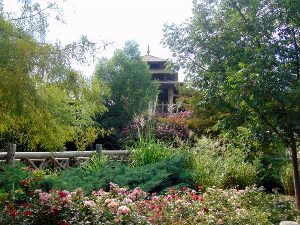
The first building you will see will be the Elephant Pavilion. This is where Keepers have Keeper Chats and demonstrations with the Elephants for visitors.
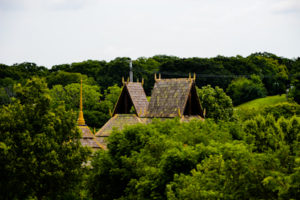
Before you walk up the boardwalk to the Elephant Barn check out the Zoozeum. This building is a museum about the Oklahoma City Zoo. It was really neat to see and learn about the history of the zoo.
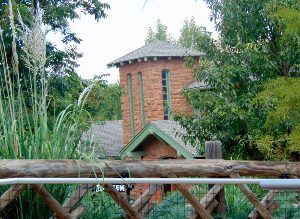
After you walk up the boardwalk you can look out over the Elephant habitat. The first habitat on the left is for the main herd of females and young.

The habitat on the right is for the bull elephant.

Then they have another habitat down the way and on the left that acts as a nursery if needed.
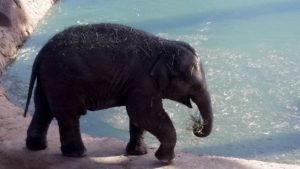
You are able to see into the Elephants House (Barn) through a window. They also provide a diagram showing the different sections of the barn.
Next up is the Sanctuary Asia exhibit. This was a massive project the zoo recently undertook to provide a large pavilion for hosting events. Inside the pavilion is a restaurant providing a variety of food offerings including some delicious Asian inspired dishes.
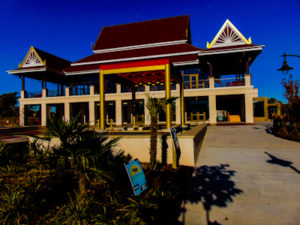
The Sanctuary Asia exhibit is impressive to look at with its large architecture, a fountain splash pad in front, and some beautiful lily ponds. There are also a few simple enclosures spread around the area.
First, you will find a pair of Cassowary. These flightless birds are quite beautiful, and they make the neatest sounds if they chose to be vocal.
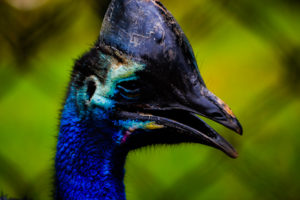
Inside the pavilion restaurant is a window where you can look into the Komodo Dragon habitat. This large reptile can often be found warming up in the sun on his rock. There are also windows on the outside of the building for viewing the Dragon.
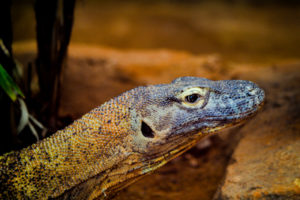
Behind the pavilion is the enclosure for an extremely popular animal, the Red Panda. You really need to to be patient when trying see these animals in this enclosure.
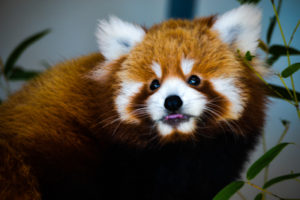
By nature, Red Pandas are not active animals and will sleep during large portions of the day. However, in addition to their low activity level, the viewing window for this enclosure has a mirror like glare.
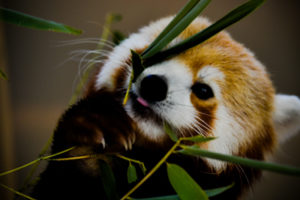
We have visited this exhibit at different times of the day, and the angle of the sun always seems to make the window difficult to see through.
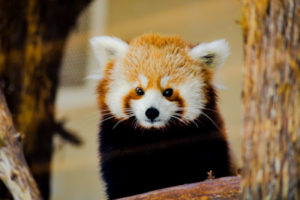
On our last visit, we were able to help some other patrons block enough light off the window to actually see the adorableness inside, but as we said earlier, you do have to be patient.

As you move on through the Sanctuary Asia, you will encounter Indian Rhinos and some more Asian Elephants.
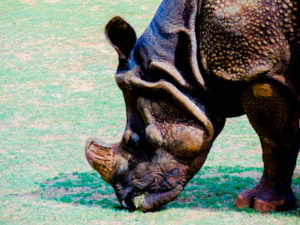
Also, you will find an enclosure shared by Francois’ Langur and an animal we had not encountered before, the Tanuki.
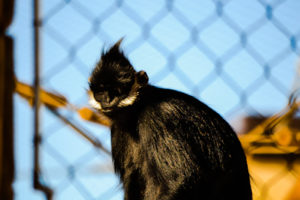
The glass on the indoor area for the Langurs has the same mirror like glare you see at the Red Panda enclosure. Your best bet is to try to catch these animals in the outdoor portion of their habitat.
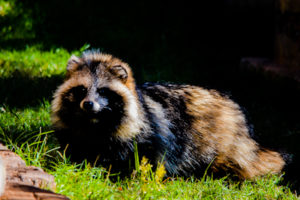
As we said, this is the first time we have encountered the Tanuki, or Raccoon Dog. This adorable animal does look like some cross of a Raccoon and Domestic Dog, but this animal is its very own, unique species of Canid (the same family as dogs, wolves, and coyotes).
We left the Asian portion of the zoo and stopped at the Tram Stop by the Great Escape. We boarded the Tram and rode the round trip through the zoo. The Tram took us everywhere we walked and a few places we didn’t.
We were able to see the Giraffe, Zebra, Okapi, and Painted Dogs on the Tram.
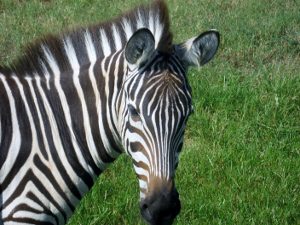
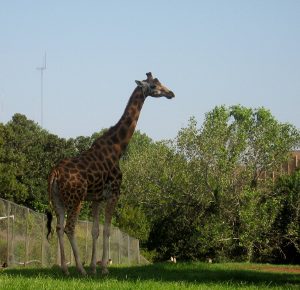
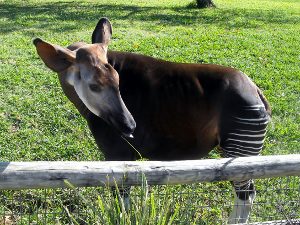
They also took us behind the scenes to the zoo and saw the Vet Hospital.
You are able to visit the Joan Kirkpatrick Vet Hospital if you take a right at the Bison on the Oklahoma Trails.
There are viewing windows you can watch different procedures on different species.
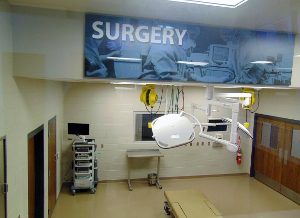
There are certain facts and stories you learn when you ride the Trains and Trams at the zoos. The Tram dropped us off at the exit and we purchased our magnet at Safari Gifts.
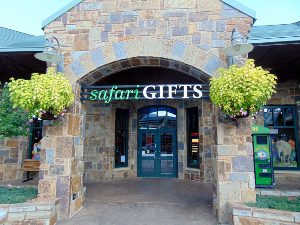
Overall Oklahoma City Zoo is a great zoo. I can’t wait to go back and see the new Sanctuary Asia once it is open. Until we visit again we got some great pictures to look at from our visit.

Oklahoma City Zoo has great habitats for their animals and good education for the visitor. Excited for the next visit.